Oman pursues utility and grid expansion
5 December 2024

Expanding renewable energy and water production capacity and interconnecting disparate grids have been key priorities for Oman’s main utility stakeholders, especially over the past two years.
These efforts support a stated objective for renewable energy to account for 30% of Oman’s electricity generation capacity by 2030 – or an intervening milestone of about 3,000MW by 2027 – while ceasing to procure new thermal capacity.
“As in every other GCC state, the role of renewables is enshrined in Oman’s overall energy production mix target,” notes a UAE-based infrastructure consultant.
In addition to the longer-term renewable energy target, the sultanate expects new wind and solar projects to contribute to almost 11% of electricity production by 2025, according to the state offtaker Nama Power & Water Procurement Company’s (Nama PWP) latest seven-year statement covering 2023-29.
The milestones appear manageable. While Oman’s operational renewable energy capacity, mainly from the Ibri 2 solar independent power project (IPP), is only around 500MW, a further 1,000MW is under construction through the Manah 1 and Manah 2 solar IPPs.
The tendering process is also under way for around 1,000MW of wind IPP schemes.
In September, Nama PWP invited firms to bid for a contract to develop and operate the first two wind farms it is procuring under an IPP framework.
Located in South Sharqiyah Governorate, the Jalan Bani Bu Ali wind IPP will cater to Oman’s Main Interconnection System (MIS). It will have a capacity of 91MW-105MW and a commercial operation target of Q1 2027.
The second scheme is the Dhofar wind IPP, catering to the smaller Dhofar Power System (DPS). It will have a capacity of 114MW-132MW and will be operational in Q2 2027.
Three other wind schemes will be tendered over the following months, bringing the total capacity of wind IPPs to be developed in Oman over the next two to three years to over 1,000MW.
Nama PWP is also expected to issue the request for proposals for the 500MW Ibri 3 solar IPP scheme shortly.
Expiring capacities
While Muscat has said it does not plan to procure further thermal power generation capacity in the foreseeable future, it successfully extended the contracts for several expiring thermal power generation and water desalination capacities earlier this year.
These agreements collectively secured over 1,500MW of electricity and 200,000 cubic metres a day (cm/d) of desalinated water for up to nine years.
The contract renewals follow the expiry or expected expiry of the power- or power and water-purchase agreements for the following plants:
- Barka 1 independent water and power project (IWPP): 427MW (installed power generation capacity) / 101,000 cm/d (desalination capacity)
- Barka 2 IWPP: 703MW / 120,000 cm/d
- Rusail IPP: 184MW
- Manah IPP: 179MW
According to Saudi utility developer Acwa Power, the Barka 1 plant’s power and water purchase agreement extension is valued at $356m.
It includes extending the operation of the power plant for eight years and nine months, starting from 1 June 2024, and the water desalination plant for three years from 1 September 2024. When it began operations in 2003, the facility contributed 6% of Oman’s electricity and 24% of its desalinated water.
Nama PWP said “efficient utilisation of gas consumption will continue to improve” over the 2023-29 planning horizon.
Peak demand forecast
Peak demand in the MIS is expected to grow at an average of approximately 3.4% a year over the seven-year planning period, reaching about 8,350MW in 2029, up from 6,628MW in 2022.
In the DPS, peak demand is anticipated to grow 5% a year, from 612MW in 2022 to 837MW in 2029.
Oman has been implementing key projects to improve the efficiency of its electricity grids, addressing growing peak demand and intermittent renewable power.
In 2023, Oman Electricity Transmission Company completed works on the $966m, 400-kilovolt (kV) first phase of the North-South Interconnection project – known as Rabt – enabling Oman’s MIS to connect with the Duqm Power System.
The project is expected to stimulate the development of the Special Economic Zone at Duqm (Sezad) and the development of renewable energy projects in the Al-Wusta Governorate. The next phase to expand the Rabt project is expected by 2026.
Oman’s second direct link to the GCC regional electricity grid is also planned to come onstream the same year.
The 400kV Oman Direct Link project will extend the Gulf Cooperation Council Interconnection Authority’s (GCCIA) 400kV transmission network to enable direct interconnection with Oman.
According to energy consultancy firm Energoprojeckt, which is advising the GCCIA on this project, a new 400kV double circuit overhead line connection, with a total route length of 528 kilometres, will be constructed from the existing 400kV GCCIA Silaa substation in the UAE to the existing 400/220kV Ibri substation in Oman.
Oman’s first link with the GCCIA became operational in November 2011. It comprises a 200kV line connecting the Mahadha grid station in Al-Wasit, Oman, to the Al-Oha grid station in Al-Ain, UAE.
Water sector
The sultanate’s water sector has been similarly buoyant. Contract awards for desalination and treatment capacity and the construction of water transmission pipelines are approaching record highs.
According to MEED Projects data, close to $1bn-worth of contracts are in the bid evaluation stage, including the estimated $100m package for the wastewater network facilities on Masirah Island, as well as several water pipeline, desalination and dam projects across the sultanate.
Oman’s Barka 5 independent water project (IWP) reached commercial operations in August, its owner and operator, Madrid-headquartered GS Inima, announced. Oman’s eighth IWP scheme has a design capacity of 100,000 cm/d.
The project, which uses reverse osmosis technology, will serve 800,000 people in the sultanate’s most populated areas: Muscat, Dakhiliyah and Batinah.
GS Inima, in a consortium with local contractor Sogex and Saudi Arabia’s Aljomaih, won the contract to develop another IWP in Oman, the 300,000 cm/d Ghubrah 3 IWP, in 2020. The project is expected to reach financial close soon.
Peak water demand in the sultanate’s MIS is expected to increase by an average of 2% annually, from 1,172,000 cm/d in 2022 to 1,387,000 cm/d in 2029.
A higher growth rate of 5% annually is expected in the sultanate’s Sharqiyah zone, and 7% is projected in Dhofar.
Other upcoming projects
In addition to Nama PWP’s plans, state-backed Petroleum Development Oman (PDO) is procuring renewable energy capacity to support its target of 30% of its power capacity coming from renewable sources by 2026 and 50% by 2030.
PDO floated a tender for two 100MW wind projects in April 2023. It is understood that PDO is in discussions with Abu Dhabi Future Energy Company (Masdar) for the contract to develop the Riyah-1 and Riyah-2 wind projects.
PDO has also appointed a team comprising Beijing-headquartered Power Construction Corporation of China (PowerChina) and its subsidiary, Huadong Engineering Corporation (HDEC), to undertake the engineering, procurement and construction (EPC) work for the two wind projects.
PDO plans to develop its second solar photovoltaic project near Saih Nihayda, next to Qarn Alam airport, in the northern region of Oman. The project is expected to come onstream late next year, nearly five years after its first 100MW Amin solar project began operating.
Exclusive from Meed
-
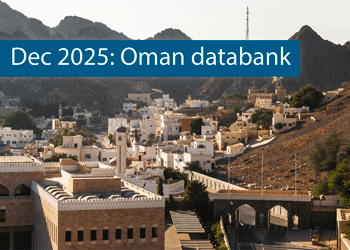 Oman’s growth forecast points upwards
Oman’s growth forecast points upwards24 December 2025
-
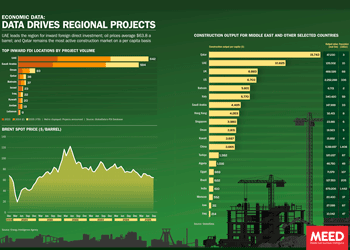 December 2025: Data drives regional projects
December 2025: Data drives regional projects23 December 2025
-
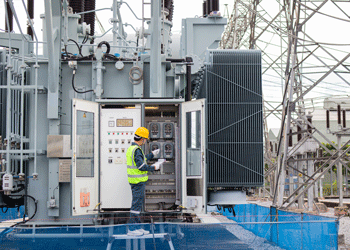 Local firm bids lowest for Kuwait substation deal
Local firm bids lowest for Kuwait substation deal22 December 2025
-
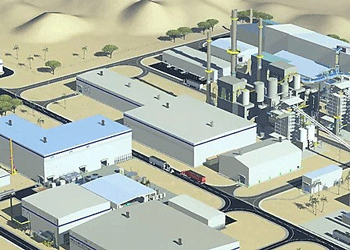 Saudi-Dutch JV awards ‘supercentre’ metals reclamation project
Saudi-Dutch JV awards ‘supercentre’ metals reclamation project22 December 2025
-
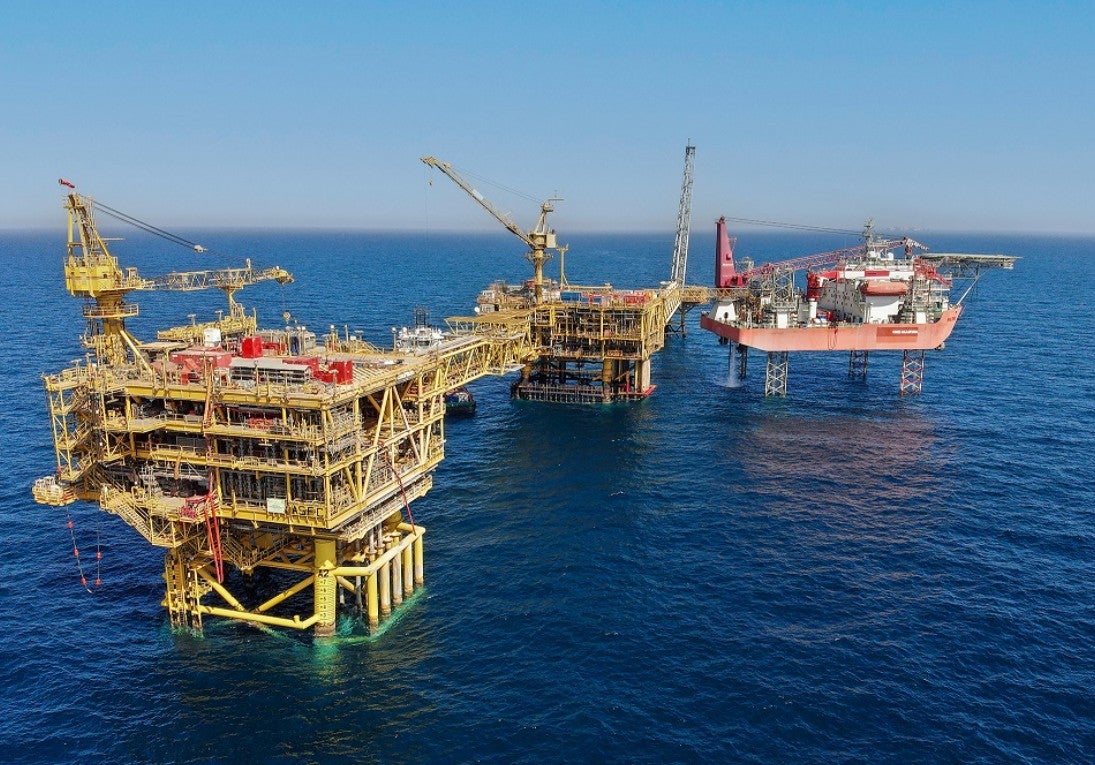 QatarEnergy LNG awards $4bn gas project package
QatarEnergy LNG awards $4bn gas project package22 December 2025
All of this is only 1% of what MEED.com has to offer
Subscribe now and unlock all the 153,671 articles on MEED.com
- All the latest news, data, and market intelligence across MENA at your fingerprints
- First-hand updates and inside information on projects, clients and competitors that matter to you
- 20 years' archive of information, data, and news for you to access at your convenience
- Strategize to succeed and minimise risks with timely analysis of current and future market trends

Related Articles
-
 Oman’s growth forecast points upwards
Oman’s growth forecast points upwards24 December 2025

MEED’s January 2026 report on Oman includes:
> COMMENT: Oman steadies growth with strategic restraint
> GVT & ECONOMY: Oman pursues diversification amid regional concerns
> BANKING: Oman banks feel impact of stronger economy
> OIL & GAS: LNG goals galvanise Oman’s oil and gas sector
> POWER & WATER: Oman prepares for a wave of IPP awards
> CONSTRUCTION: Momentum builds in construction sectorTo see previous issues of MEED Business Review, please click herehttps://image.digitalinsightresearch.in/uploads/NewsArticle/15306449/main.gif -
 December 2025: Data drives regional projects
December 2025: Data drives regional projects23 December 2025
Click here to download the PDF
Includes: Top inward FDI locations by project volume | Brent spot price | Construction output
MEED’s January 2026 report on Oman includes:
> COMMENT: Oman steadies growth with strategic restraint
> ECONOMY: Oman pursues diversification amid regional concerns
> BANKING: Oman banks feel impact of stronger economy
> OIL & GAS: LNG goals galvanise Oman’s oil and gas sector
> POWER & WATER: Oman prepares for a wave of IPP awards
> CONSTRUCTION: Momentum builds in construction sectorTo see previous issues of MEED Business Review, please click herehttps://image.digitalinsightresearch.in/uploads/NewsArticle/15306140/main.gif -
 Local firm bids lowest for Kuwait substation deal
Local firm bids lowest for Kuwait substation deal22 December 2025
The local Al-Ahleia Switchgear Company has submitted the lowest price of KD33.9m ($110.3m) for a contract to build a 400/132/11 kV substation at the South Surra township for Kuwait’s Public Authority for Housing Welfare (PAHW).
The bid was marginally lower than the two other offers of KD35.1m and KD35.5m submitted respectively by Saudi Arabia’s National Contracting Company (NCC) and India’s Larsen & Toubro.
PAHW is expected to take about three months to evaluate the prices before selecting the successful contractor.
The project is one of several transmission and distribution projects either out to bid or recently awarded by Kuwait’s main affordable housing client.
This year alone, it has awarded two contracts worth more than $100m for cable works at its 1Z, 2Z, 3Z and 4Z 400kV substations at Al-Istiqlal City, and two deals totalling just under $280m for the construction of seven 132/11kV substations in the same township.
Most recently, it has tendered two contracts to build seven 132/11kV main substations at its affordable housing project, west of Kuwait City. The bid deadline for the two deals covering the MS-01 through to MS-08 substations is 8 January.
https://image.digitalinsightresearch.in/uploads/NewsArticle/15305745/main.gif -
 Saudi-Dutch JV awards ‘supercentre’ metals reclamation project
Saudi-Dutch JV awards ‘supercentre’ metals reclamation project22 December 2025
The local Advanced Circular Materials Company (ACMC), a joint venture of the Netherlands-based Shell & AMG Recycling BV (SARBV) and local firm United Company for Industry (UCI), has awarded the engineering, procurement and construction (EPC) contract for the first phase of its $500m-plus metals reclamation complex in Jubail.
The contract, estimated to be worth in excess of $200m, was won by China TianChen Engineering Corporation (TCC), a subsidiary of China National Chemical Engineering Company (CNCEC), following the issue of the tender in July 2024.
Under the terms of the deal, TCC will process gasification ash generated at Saudi Aramco’s Jizan refining complex on the Red Sea coast to produce battery-grade vanadium oxide and vanadium electrolyte for vanadium redox flow batteries. AMG will provide the licensed technology required for the production process.
The works are the first of four planned phases at the catalyst and gasification ash recycling ‘Supercentre’, which is located at the PlasChem Park in Jubail Industrial City 2 alongside the Sadara integrated refining and petrochemical complex.
Phase 2 will expand the facility to process spent catalysts from heavy oil upgrading facilities to produce ferrovanadium for the steel industry and/or additional battery-grade vanadium oxide.
Phase 3 involves installing a manufacturing facility for residue-upgrading catalysts.
In the fourth phase, a vanadium electrolyte production plant will be developed.
The developers expect a total reduction of 3.6 million metric tonnes of carbon dioxide emissions a year when the four phases of the project are commissioned.
SARBV first announced its intention to build a metal reclamation and catalyst manufacturing facility in Saudi Arabia in November 2019. The kingdom’s Ministry of Investment, then known as the Saudi Arabian General Investment Authority (Sagia), supported the project.
In July 2022, SARBV and UCI signed the agreement to formalise their joint venture and build the proposed facility.
The project has received support from Saudi Aramco’s Namaat industrial investment programme. Aramco, at the time, also signed an agreement with the joint venture to offtake vanadium-bearing gasification ash from its Jizan refining complex.
Photo credit: SARBV
https://image.digitalinsightresearch.in/uploads/NewsArticle/15305326/main.gif -
 QatarEnergy LNG awards $4bn gas project package
QatarEnergy LNG awards $4bn gas project package22 December 2025
QatarEnergy LNG, a subsidiary of state-owned QatarEnergy, has awarded the main engineering, procurement, construction and installation (EPCI) contract for a major package for the second phase of its North Field Production Sustainability (NFPS) project.A consortium comprising the Italian contractor Saipem and state-owned China Offshore Oil Engineering Company (COOEC) has secured the EPCI contract for the COMP5 package. The contract value is $4bn, with Saipem declaring its share to be worth $3.1bn.
Milan-headquartered Saipem said the contract will run for about five years. The scope of work comprises engineering, procurement, fabrication and installation of two compression complexes, each including a compression platform, a living quarters platform, a flare platform supporting the gas combustion system, and the related interconnecting bridges. Each complex will have a total weight of about 68,000 tonnes.
Offshore installation operations will be carried out by Saipem’s De He construction vessel in 2029 and 2030.
MEED previously reported that the following contractors submitted bids for the NFPS phase two COMP5 package:
- Larsen & Toubro Energy Hydrocarbon (India)
- McDermott (US)
- Saipem/China Offshore Oil Engineering Company (Italy/China)
QatarEnergy LNG, formerly Qatargas, is said to have issued the tender for the NFPS phase two COMP5 package in the first quarter of the year.
Contractors submitted technical bids for the COMP5 package in late June, while commercial bids were submitted by 8 October, as per sources.
Based upon initial evaluation of bids by QatarEnergy LNG, L&TEH has emerged as the lowest bidder for the COMP5 package, followed by McDermott, with the consortium of Saipem and COOEC in third place, MEED reported in late October.
In the weeks following that, the project operator is said to have engaged all bidders for a final round of negotiations, during which the consortium of Saipem and COOEC is believed to have “clinched the deal”, according to sources.
The detailed scope of work on the COMP5 package covers the EPCI work on the following:
- Two gas compression platforms, each weighing 30,000-35,000 tonnes, plus jacket
- Two living quarters platforms, plus jacket
- Two gas flare platforms, plus jacket
- Brownfield modification work at two complexes
NFPS scheme
QatarEnergy’s North Field liquefied natural gas (LNG) expansion programme requires the state enterprise to pump large volumes of gas from the North Field offshore reserve to feed the three phases of the estimated $40bn-plus programme.
QatarEnergy has already invested billions of dollars in engineering, procurement and construction works on the two phases of the NFPS project, which aims to maintain steady gas feedstock for the North Field LNG expansion phases.
The second NFPS phase will mainly involve building gas compression facilities to sustain and gradually increase gas production from Qatar’s offshore North Field gas reserve over the long term.
Saipem has been the most successful contractor on the second NFPS phase, securing work worth a total of $8.5bn.
QatarEnergy LNG awarded Saipem a $4.5bn order in October 2022 to build and install gas compression facilities. The main scope of work on the package, which is known as EPCI 2, covers two large gas compression complexes that will comprise decks, jackets, topsides, interconnecting bridges, flare platforms, living quarters and interface modules.
The gas compression complexes – CP65 and CP75 – will weigh 62,000 tonnes and 63,000 tonnes, respectively, and will be the largest fixed steel jacket compression platforms ever built.
Following that, Saipem won combined packages COMP3A and COMP3B of the NFPS project’s second phase in September last year.
The scope of work on the combined packages encompasses the EPCI of a total of six platforms, approximately 100 kilometres (km) of corrosion resistance alloy rigid subsea pipelines of 28-inches and 24-inches diameter, 100km of subsea composite cables, 150km of fibre optic cables and several other subsea units.
Separately, QatarEnergy LNG awarded McDermott the contract for the NFPS second phase package known as EPCI 1, or COMP1, in July 2023. The scope of work on the estimated $1bn-plus contract is to install a subsea gas pipeline network at the North Field gas development.
In March this year, India’s Larsen & Toubro Energy Hydrocarbon (LTEH) won the main contract for the combined 4A and 4B package, which is the fourth package of the second phase of the NFPS project and is estimated to be valued at $4bn-$5bn.
The main scope of work on the package is the EPCI of two large gas compression systems that will be known as CP8S and CP4N, each weighing 25,000-35,000 tonnes. The contract scope also includes compression platforms, flare gas platforms and other associated structures.
LTHE sub-contracted detailed engineering and design works on the combined 4A and 4B package to French contractor Technip Energies.
NFPS first phase
Saipem is also executing the EPCI works on the entire first phase of the NFPS project, which consists of two main packages.
Through the first phase of the NFPS scheme, QatarEnergy LNG aims to increase the early gas field production capacity of the North Field offshore development to 110 million tonnes a year.
QatarEnergy LNG awarded Saipem the contract for the EPCI package in February 2021. The package is the larger of the two NFPS phase one packages and has a value of $1.7bn.
Saipem’s scope of work on the EPCI package encompasses building several offshore facilities for extracting and transporting natural gas, including platforms, supporting and connecting structures, subsea cables and anti-corrosion internally clad pipelines.
The scope of work also includes decommissioning a pipeline and other significant modifications to existing offshore facilities.
In addition, in April 2021, QatarEnergy LNG awarded Saipem two options for additional work within the EPCI package, worth about $350m.
QatarEnergy LNG awarded Saipem the second package of the NFPS phase one project, estimated to be worth $1bn, in March 2021.
Saipem’s scope of work on the package, which is known as EPCL, mainly covers installing three offshore export trunklines running almost 300km from their respective offshore platforms to the QatarEnergy LNG north and south plants located in Ras Laffan Industrial City.
Saipem performed the front-end engineering and design work on the main production package of the first phase of the NFPS as part of a $20m contract that it was awarded in January 2019. This provided a competitive advantage to the Italian contractor in its bid to win the package.
https://image.digitalinsightresearch.in/uploads/NewsArticle/15305330/main2239.jpg

